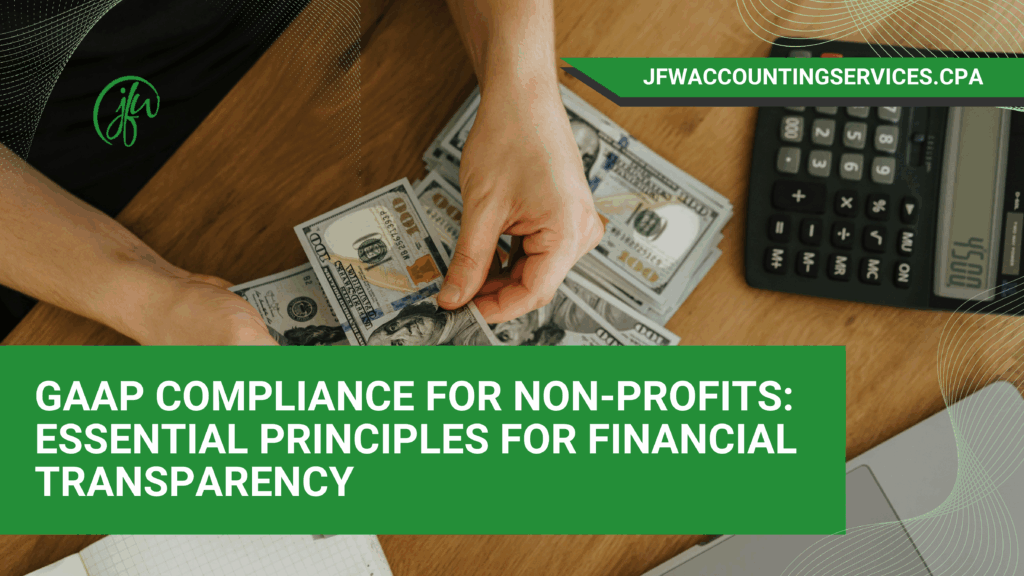GAAP compliance for nonprofits serves as the cornerstone of successful operations and financial transparency. Many organizations, despite their mission-driven focus, find themselves overwhelmed by complex accounting standards that seem disconnected from their daily work. The difference between thriving nonprofits and those that falter often lies not in their mission passion, but in their financial management practices. For nonprofit leaders who want to build lasting impact while maintaining stakeholder confidence, mastering GAAP compliance becomes a strategic imperative that extends far beyond simple bookkeeping requirements.
Understanding Net Asset Classifications
GAAP requires nonprofit organizations to classify net assets into two categories: with donor restrictions and without donor restrictions. This classification replaces the previous three-category system of unrestricted, temporarily restricted, and permanently restricted funds.
Net assets without donor restrictions include funds that the organization can use for any purpose within its mission. Board-designated funds fall into this category, as the board retains the ability to change designations.
Net assets with donor restrictions encompass funds limited by donor-imposed restrictions that expire by passage of time, fulfillment of purpose, or both. Permanently restricted endowment funds also belong to this category.
Organizations must track these classifications carefully and report changes between categories when restrictions are met or released. This net asset reporting framework builds upon fundamental accounting principles, including the requirement for accrual-based reporting. Our guide on cash vs accrual accounting for nonprofits explains why GAAP mandates this approach for most nonprofit organizations.
Revenue Recognition Standards
The Financial Accounting Standards Board (FASB) updated revenue recognition standards for nonprofits, requiring organizations to distinguish between contributions and exchange transactions.
Contributions are unconditional transfers of assets that increase net assets. These may include donations, grants, and volunteer services. Organizations must recognize contributions when received, regardless of when cash arrives.
Exchange transactions involve reciprocal transfers where the organization provides goods or services. Examples include membership fees, tuition, and program fees. Revenue recognition follows the performance obligation model, recognizing revenue as the organization satisfies its obligations to provide goods or services.
Expense Reporting and Functional Classifications
GAAP mandates that nonprofits report expenses by both function and nature. Functional expense reporting divides costs into program services and supporting activities (management, fundraising).
Program services directly relate to the organization’s mission and include costs for specific programs, projects, or services provided to beneficiaries.
Supporting activities encompass management, general administrative costs, and fundraising expenses that enable the organization to accomplish its mission but don’t directly provide services to beneficiaries.
Organizations must also provide a detailed breakdown showing expenses by nature (salaries, rent, supplies) within each functional category. This dual reporting provides stakeholders with comprehensive information about resource allocation.
Conditional and Unconditional Promises to Give
GAAP distinguishes between conditional and unconditional promises to give, affecting when organizations can recognize contributions as revenue.
Unconditional promises must be recognized immediately as revenue and receivables, even when payment is scheduled for future periods. Organizations should record these at net realizable value, considering potential uncollectible amounts.
Conditional promises contain donor-imposed barriers that must be overcome before the organization has an unconditional right to receive funds. Organizations cannot recognize these as revenue until conditions are substantially met or explicitly waived by the donor.
Proper documentation and tracking of donor agreements ensures accurate classification and reporting of these promises. For detailed guidance on implementing these principles, the Jitasa Group’s comprehensive GAAP guide provides practical examples and best practices.
Statement of Cash Flows Requirements
Nonprofits must prepare statements of cash flows using either the direct or indirect method. The statement should classify cash flows into three categories:
- Operating activities: Cash flows from program services and supporting activities
- Investing activities: Cash flows from acquiring or disposing of long-term assets
- Financing activities: Cash flows from borrowing, repaying debt, and receiving restricted contributions
The statement of cash flows helps stakeholders understand how the organization generates and uses cash, providing insight into financial flexibility and liquidity.
Building Stakeholder Trust Through GAAP Compliance
GAAP compliance demonstrates accountability to donors, grantors, and regulatory bodies. Transparent financial reporting builds confidence among stakeholders who want assurance that their contributions are being used effectively.
Donors increasingly scrutinize nonprofit financial statements before making giving decisions. Clear, GAAP-compliant reports show responsible stewardship and can attract larger gifts from major donors and foundations.
Grant-making organizations often require GAAP-compliant financials as part of application processes. Compliance opens doors to funding opportunities that might otherwise be unavailable. The Pennsylvania Institute of CPAs offers valuable insights on how proper financial reporting strengthens nonprofit operations and credibility.
Practical Implementation Steps
Start by conducting a thorough review of current accounting practices against GAAP requirements. Identify gaps between existing procedures and required standards.
Invest in appropriate accounting software designed for nonprofit organizations. Modern solutions can automate many GAAP compliance features, reducing manual effort and minimizing errors.
Train finance staff on nonprofit-specific GAAP requirements. Consider engaging professional development opportunities or working with experienced nonprofit accountants.
Establish clear procedures for documenting donor restrictions and tracking compliance with those restrictions throughout the fiscal year.
Create month-end and year-end closing procedures that ensure all GAAP requirements are met consistently.
Benefits of Nonprofit GAAP Compliance
GAAP compliance provides benefits beyond meeting regulatory requirements. Standardized reporting enables better internal decision-making by providing consistent, comparable financial information.
Compliance facilitates easier audits, reducing costs and time involved in the audit process. Many auditors expect GAAP-compliant records, and deviations can increase audit complexity and expense.
Financial institutions often require GAAP-compliant statements for loan applications. Compliance can improve access to favorable financing terms.
Board members can better fulfill their fiduciary responsibilities when provided with clear, standardized financial reports that follow GAAP principles.
Your Path to Financial Excellence
GAAP compliance for nonprofits requires ongoing attention and expertise. Organizations benefit from working with accounting professionals who understand the unique challenges and requirements of nonprofit financial reporting.
Regular review and updates ensure that financial reporting keeps pace with evolving standards and organizational needs. Staying current with GAAP requirements protects organizations from compliance issues and strengthens their financial foundation. Nonprofit Accounting Basics provides additional resources for organizations seeking to deepen their understanding of these fundamental principles.
Ready to strengthen your nonprofit’s financial transparency and compliance? Contact us today to learn how our specialized team can help you implement GAAP standards effectively. Our professionals provide comprehensive guidance on nonprofit financial reporting, ensuring your organization maintains the highest standards of accountability while you focus on advancing your mission.

Jo-Anne Williams Barnes, is a Certified Public Accountant (CPA) and Chartered Global Management Accountant (CGMA) holding a Master’s of Science in Accounting (MSA) and a Master’s in Business Administration (MBA). Additionally, she holds a Bachelor of Science (BS) in Accounting from the University of Baltimore and is a seasoned accounting professional with several years of experience in the field of managing financial records for non-profits, small, medium, and large businesses. Jo-Anne is a certified Sage Intacct Accounting and Implementation Specialist, a certified QuickBooks ProAdvisor, an AICPA Not-for-Profit Certificate II holder, and Standard for Excellence Licensed Consultant. Additionally, Jo-Anne is a member of American Institute of Certified Public Accountant (AICPA), Maryland Association of Certified Public Accountants (MACPA), and Greater Washington Society of Certified Public Accountants (GWSCPA) where she continues to keep abreast on the latest industry trends and changes.

